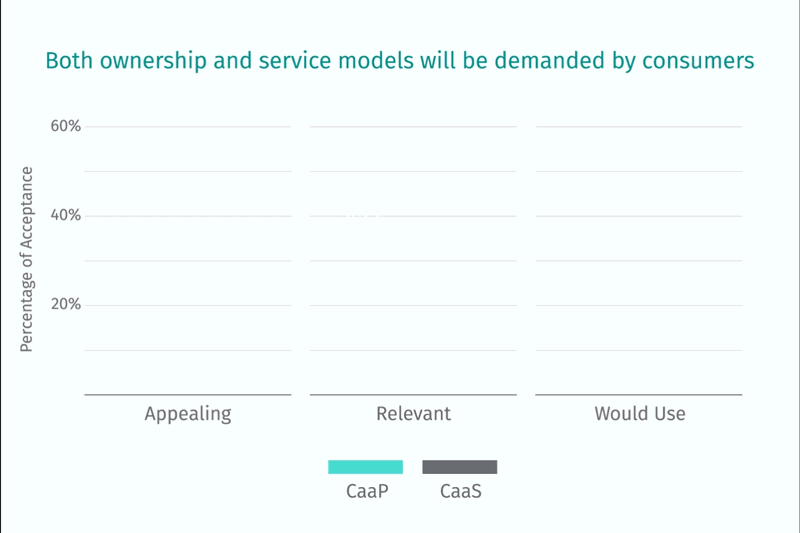Will autonomous cars really improve safety?
Maja Stefanovic — 14 November 2025
6 min read
29 June 2017

Driving nowhere can have its charms, and one of which is its unpredictability. You jump in your car with no destination in mind, and see where the four wheels take you. This, however, isn't how autonomous vehicles work.

Autonomous vehicles are built for efficiency -- with the aim to transport a driver (now passenger) from one exact location to another in as seamless a way possible. While in the near future autonomous vehicles will likely have manual override as teething issues are overcome, the true advent of driverless cars may see them become just that -- completely driverless.
So what impact will this have on the way we drive, and how we explore using our vehicles?
Have you ever caught a cab without knowing the exact address, just the general area of your destination? You're able to direct the cab driver up to a certain point and bingo: you've found your bearings and know where you're going. This approach may now seem antiquated -- we're used to providing our Lyft or Uber drivers with exact postcodes ahead of time, where they ferry us to our destination without further ado.
This, however, isn't always the way people work. We are forgetful, we lose the message which contains the destination address. Sometimes, we're even a little sozzled after a night on the town. Sure, we have enough battery left to hail one of these cabs, but our final destination is only a rough approximation. Thankfully, we can help direct these drivers -- but once autonomous cars as a service arrives, such a luxury will cease to exist.

Autonomous vehicles will be smart, sure, but not smart enough to hold an active conversation (at least, not in the near future) and take directions from a person unsure of their final destination. It's both comical and slightly tragic to imagine an inebriated person begging an autonomous car to just drop them at a barely defined location in a desperate attempt to remember the name of their new student digs.
The simple answer to this is that we will have to adapt, not the autonomous vehicles. People will have to take the idiom, 'failing to prepare is preparing to fail', to heart, and have the exact details of your destination in mind at all times. This, perhaps, may be a tricky learning curve to navigate, and may remove some of the spontaneity of these journeys, but could become second-nature in a few years. Frankly, we could all stand to be a little less scatty.
Trickier to dissect, however, is how autonomous vehicles will impact driving for personal enjoyment.
Cars have been sold for decades on the idea that driving can be enjoyable. While advertisements for cars often note the practical advantages of a vehicle, the usual method of sale is to romanticise the experience of driving itself. A TV advert for Land Rover, for example, will usually show a middle-class man driving through enormous puddles as his highly capable vehicle traverses a rocky landscape with almost haughty indifference.
Indeed, it is the hands-on experience that has been sold for so many years as the true draw of driving. This has slightly changed in recent years, with adverts highlighting what the car can do, rather than what you can do with the car, and can perhaps shed some light on the perceived generation gap in terms of acceptance of autonomous vehicles.

A recent survey found that older generations were less likely to adopt autonomous vehicles, while younger ones were far more inclined to do so. The joy of driving, rather than being driven, seems to be losing its allure with younger people, with fewer young people getting drivers' licences than ever before.
So, what does it all mean for people who still yearn the for the thrill of steering a vehicle along an open road? Well, it may not be all bad news. As the opening stages of autonomous vehicles see manufacturers opt for a happy medium approach, drivers could hand over control during, say, a hideous morning commute, and reclaim it once they're through the traffic and back on the open road.
Also, given the initial reluctance of the older generation to turn to autonomous vehicles, it would be no surprise to see autonomous vehicles making allowances to offer more freedom to users, in a bid to hasten widespread adoption. This, however, is guesswork.
Whether we'll see drivers and OEMs meeting in the middle to ensure autonomous cars offer both convenience and freedom remains to be seen. Yet, we can all agree that a world where the road is a little less open, becomes a little less interesting.

Jamie Stevenson
Programme Director II
Share article
Maja Stefanovic — 14 November 2025
Louis Boroditsky — 11 November 2025
Maja Stefanovic — 05 November 2025
Why sign up:
Latest offers and discounts
Tailored content delivered weekly
Exclusive events
One click to unsubscribe